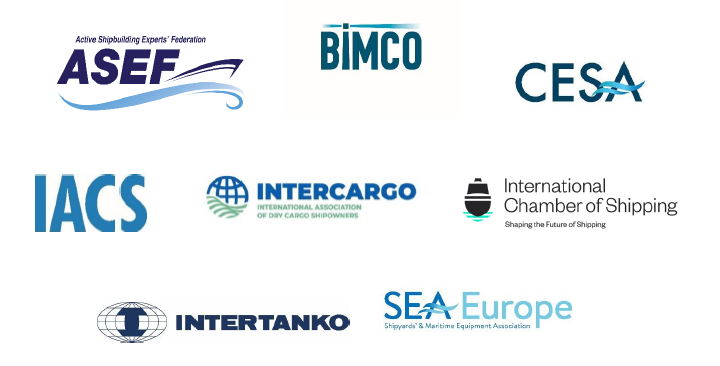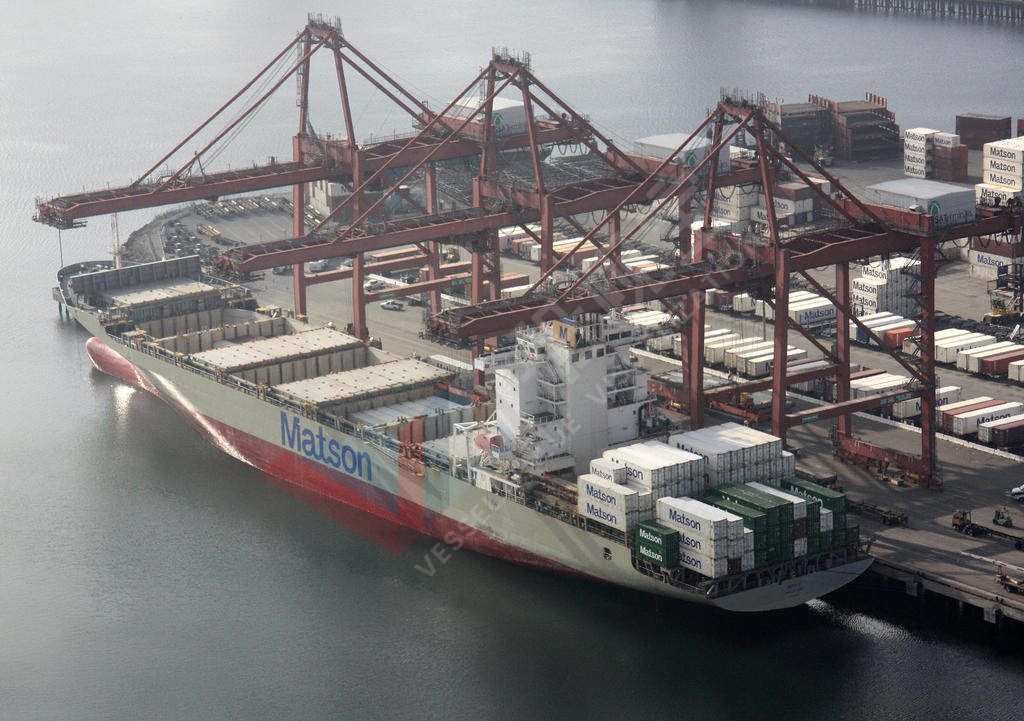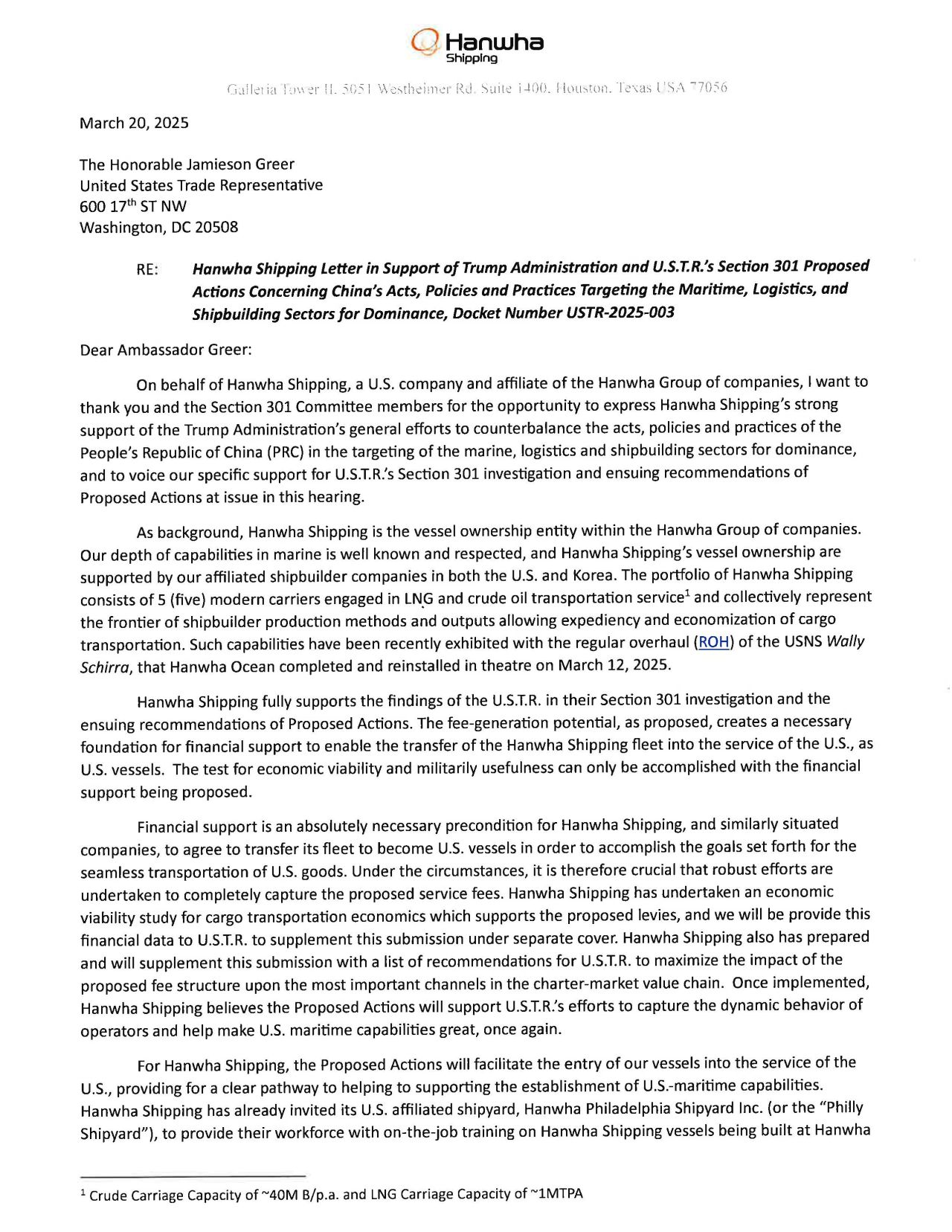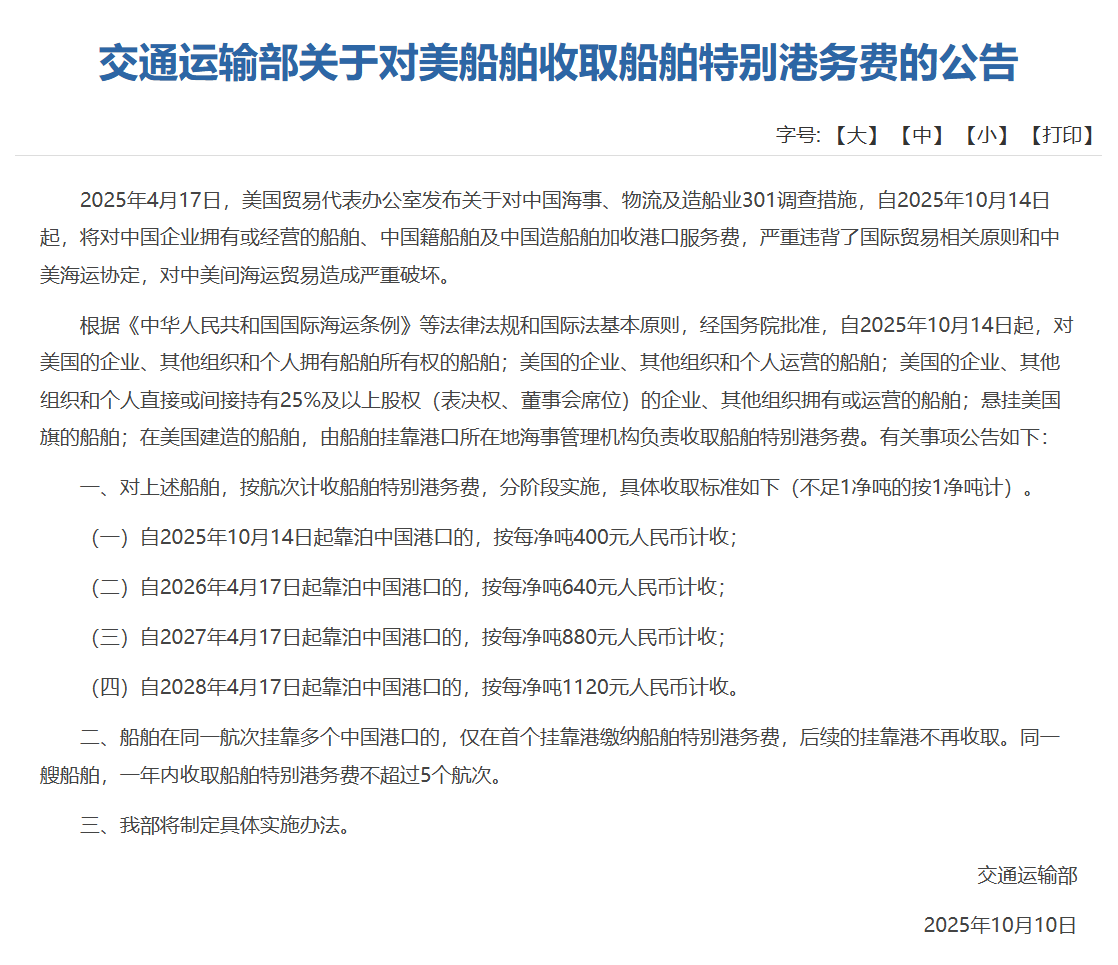To support consistent implementation and verification of the 0.50% sulphur limit, MARPOL Annex VI has been amended to introduce definitions distinguishing between ‘in-use’ and ‘on board’ fuel oil samples taken from a vessel.
To facilitate the need for taking ‘in-use’ samples, ships constructed before 1 April 2022 are required to designate or, if necessary, fit sampling points no later than the first IAPP renewal survey on or after 1 April 2023. For ships built on or after 1 April 2022, sampling points needs to be in place and designated upon delivery. These requirements are not applicable to a fuel oil service system for a low-flashpoint fuel, i.e., having a flashpoint less than 60oC.
Consequentially, Appendix I has been amended to update the International Air Pollution Prevention (IAPP) certificate to add a reference to sampling points and to note where there is an exemption to the provision for low-flashpoint fuel.
Appendix VI of MARPOL Annex VI has also been revised to simplify the verification procedure for ‘MARPOL delivered fuel oil sample’ and to add verification procedures for the ‘in-use’ and ‘on board’ samples. To avoid ships being unjustly fined for marginal excess in sulphur content beyond their control, 95% confidence will be allowed. This implies that when testing the ‘in-use’ and ‘on board’ samples, the acceptable sulphur limits are extended to 0.11% and 0.53% for 0.10% and 0.5% respectively.
For further details, please refer to the club’s article on ‘Guidelines for fuel oil sampling and designated sampling points’. Members are recommended to review their fuel oil sampling procedures to ensure that samples can be drawn safely from the ship’s fuel service system in compliance with these guidelines.
Amendments to regulations 20 and 21 of MARPOL Annex VI – MEPC.324(75) – Energy Efficiency Design Index (EEDI)
A new paragraph 3 under regulation 20 has been added, mandating reporting of the required and attained EEDI values and relevant information to the IMO.
Additionally, the Table 1 of regulation 21 on required EEDI has been replaced with a view to advance the starting date of EEDI Phase 3 from 1 January 2025 to 1 April 2022 for container ships, large gas carriers (>15,000 DWT), general cargo ships, LNG carriers and cruise passenger ships having non-conventional propulsion. A stepwise reduction requirement will apply to container ships, starting with a 30% reduction rate for small container vessels and increasing up to 50% for very large container ships.
The EEDI reference line for large bulk carriers (>279,000 DWT) will be constant, calculated based on 279,000 DWT, regardless of the actual DWT.
Members are recommended to take note of these requirements as there are a number of technical and operational measures that needs to be considered for the reduction of green-house gas (GHG) emissions.
Regulations that came into force in June 2022
Amendments to the Ballast Water Management Convention (BWMC) – MEPC.325(75) – Commissioning testing of ballast water management systems (Regulation E-1) and form of the International Ballast Water Management Certificate (Appendix I)
A commissioning test based on BWM.2/Circ.70/Rev.1 will be required after the installation of ballast water management system (BWMS) to validate that its mechanical, physical, chemical and biological processes are working correctly.
Additionally, a new tick box for management methods other than D-1, D-2 and D-4 has been added in the International Ballast Water Management Certificate. This is meant for vessels using alternative approaches, such as reception facilities (B-3.6-7).
Members should note that commissioning testing is to be conducted by an entity independent from the BWMS manufacturer or supplier and approved by flag Administration or the Recognised Organisation working on its behalf. Some flag administrations have been requiring commissioning testing ahead of the BWMC amendments entering into force.
Amendments (40-20) to the International Maritime Dangerous Goods (IMDG) Code – MSC.477(102)
Amendments (40-20) to the International Maritime Dangerous Goods (IMDG) Code – MSC.477(102)
The latest amendment (40-20) is related to segregation requirements for alcoholates; segregation in relation to liquid organic substances; classification and transport of carbon, following incidents involving the spontaneous ignition of charcoal; classification of UN portable tanks for multimodal transport; and provisions for labels; and introduction of a new handling code for medical waste and other updated guidance.
These amendments were applied by certain flag states completely or in part on a voluntary basis from 1 January 2021. Since 1 June 2022, they will become mandatory.
Members who are involved in the carriage of dangerous goods subject to the IMDG code are recommended to pay due attention to their Flag State requirements for ships’ compliance.
2021 Guidelines for Exhaust Gas Cleaning Systems (EGCS) – MEPC.340(77)
Regulation 14 of MARPOL Annex VI stipulates the maximum allowable sulphur content limits (% by mass) of fuels used on board ships. In addition, the use of exhaust gas cleaning systems (EGCS) (as specified Regulation 4 of MARPOL Annex VI) instead of low-sulphur fuels is considered to be an alternative means of complying with Regulation 14.
The 2021 EGCS Guidelines (MEPC.340(77)), updates the previously issued 2015 EGCS Guidelines (MEPC.259(68)), and ensure that scrubbers are effective in meeting sulphur emission limits while also meeting environmental criteria for water discharges.
The new guideline applies to all EGCS installations which are delivered to vessels or are significantly modified on or after 1 June 2022. For EGCS installations with a documented contractual delivery date prior to 1 June 2022, but where delivery was delayed (e.g., due to the pandemic restrictions), the 2015 EGCS guideline may still be applied. Systems installed prior to 1 June 2022 will not require reapproval.
A revised MEPC circular (MEPC.1/Circ.883/Rev.1), which applies to all EGCS (old or new), provides updated guidance for indicating compliance if a single monitoring instrument fails, as well as recommended actions to take if the EGCS fails to meet the provisions of the EGCS Guidelines.
Members with ships fitted with scrubbers (EGCS) are recommended to take note of these requirements and ensure compliance.
Amendments to the International Aeronautical and Maritime Search and Rescue (IAMSAR) Manual – MSC.1/Circ.1640
The latest amendments take into account the recent developments in the modernisation of the Global Maritime Distress and Safety System (GMDSS) and the inclusion of a new remote maritime mobile satellite system (RMSS) – Iridium. The IAMSAR Volume III, which is meant for maritime mobile stations, now also includes new action cards added to section 12.
Members are advised to be guided by above and ensure that in accordance with SOLAS regulation V/21, an up-to-date copy of the IAMSAR manual Volume III shall be placed on board.
Regulations coming into force in July 2022
Performance Standards for Float-Free Emergency Position-Indicating Radio Beacons (EPIRBs), Simplified Voyage Data Recorders (S-VDRs) and Voyage Data Recorders (VDRs) – MSC.471(101), MSC.493(104) and MSC.494(104)
The IMO has revised its EPIRB performance standards to introduce more recent technology with the aim of further improving the capability of these devices to assist in distress alerting and locating. The main updates in the new performance standard are mandatory requirements for the beacon to include a global navigation satellite system (GNSS) receiver (e.g., GPS, GLONASS) and an Automatic Identification System (AIS) transmitter, so that the beacon’s emergency signal includes a position fix and AIS locating signal. EPIRBs installed on or after 1 July 2022 are required to be type approved to the new performance standard.
The update to the EPIRB performance standard has had a knock-on effect on the IMO’s VDR and S-VDR performance standards, as the VDR’s float-free data capsule is required to meet the requirements of the latest EPIRB performance standard. VDRs installed on or after 1 July 2022, are to be approved to IMO Resolution MSC.333(90), as amended by MSC.494(104). Similarly, S-VDRs installed on or after 1 July 2022, are to be approved to IMO Resolution MSC.163(78), as amended by resolution MSC.214(81) and MSC.493(104).
Members are recommended to take note of these requirements and accordingly plan in consultation with the manufacturer that above mentioned shipborne navigational and radio equipment installed onboard on or after 1 July 2022 conforms to the latest performance standards. The testing and maintenance of EPIRBs should also be done according to the latest guidelines, particularly for GNSS/AIS enabled EPIRBs.
Regulations coming into force in November 2022
Amendments to MARPOL Annexes I, IV and VI – MEPC.328(76), MEPC.330(76) and MEPC.1/Circ.892 – Exemption of Unmanned Non-Self-Propelled (UNSP) Barges from Survey and Certification Requirements
These amendments include individual definitions of a UNSP barge under each Annex together with the exemption certificate templates. It specifies that the Administration may exempt a UNSP barge from the annual survey and certification requirements, for a period not exceeding 5 years provided that the UNSP barge has undergone a survey to confirm that certain conditions are met.
These amendments include individual definitions of a UNSP barge under each Annex together with the exemption certificate templates. It specifies that the Administration may exempt a UNSP barge from the annual survey and certification requirements, for a period not exceeding 5 years provided that the UNSP barge has undergone a survey to confirm that certain conditions are met.
Generally, a UNSP barge is defined as a barge that:
• is not propelled by mechanical means; and
• has neither persons nor living animals on board during navigation; and
• carries no oil; has no fuel oil tank, lubricating oil and bilge oil residues tank and has no machinery fitted that may use oil or generate oil residues (Annex I); and/or
• is not used for holding sewage during transport or have any arrangements that could produce sewage (Annex IV); and/or
• has no system, equipment and/or machinery fitted that may generate emissions (Annex VI).
• is not propelled by mechanical means; and
• has neither persons nor living animals on board during navigation; and
• carries no oil; has no fuel oil tank, lubricating oil and bilge oil residues tank and has no machinery fitted that may use oil or generate oil residues (Annex I); and/or
• is not used for holding sewage during transport or have any arrangements that could produce sewage (Annex IV); and/or
• has no system, equipment and/or machinery fitted that may generate emissions (Annex VI).
It should be noted that a condition of the exemption certificate is an obligation on the shipowner or operator to notify the flag Administration and port State if the UNSP barge becomes non-compliant. Any such exemption certificate will cease to be valid whenever the UNSP barge does not continue to meet the definition of a UNSP barge as mentioned above regardless of whether the owner or operator informs the Administration and/or the port State.
Amendments to MARPOL Annex I – MEPC.329(76) – Prohibition on the use and carriage for use as fuel of heavy fuel oil by ships in Arctic waters
To reduce risks of use and carriage of heavy fuel oil (HFO) as fuel by ships in Arctic waters amendments to MARPOL Annex I (addition of a new regulation 43A) were adopted).
Even though these requirements will enter into force on 1 November 2022, the use and carriage ban will only take effect on 1 July 2024.
The application will be to all ships, except for ships engaged in securing the safety of ships or in search and rescue operations, and ships dedicated to oil spill preparedness and response.
Members with ships operating in and around the Arctic region are recommended to take note of these amendments. There are, however, exemptions for ships with fuel tanks protected by double hulls, and waivers for ships flying the flag of countries with a coastline bordering on Arctic, that will allow these ships to continue carry HFO for use until 1 July 2029.
Members are also reminded that, other than in cases of purely accidental discharge, P&I cover for fines related to MARPOL violations is only available on a discretionary basis.
Revised MARPOL Annex VI – MEPC.328(76) – Mandatory goal-based technical and operational measures to reduce carbon intensity of international shipping
Revised MARPOL Annex VI introduce carbon intensity measures (requirements for ships to calculate their Energy Efficiency Existing Ship Index (EEXI) following technical means to improve their energy efficiency and to establish their annual operational carbon intensity indicator (CII) and CII rating (from A to E). The rating thresholds will be increasingly stringent towards 2030. For ships that achieve a D rating for three consecutive years or an E rating in a single year, a corrective action plan needs to be developed as part of the Ship Energy Efficiency Management Plan (SEEMP) and approved.
By 31 December 2022, all ships above 400 GT need to have an approved SEEMP on board, and the implementation of the SEEMP will be subject to audits. For ships above 5,000 GT, the SEEMP also needs to include mandatory content, such as an implementation plan on how to achieve the CII targets.
The IMO Marine Environment Protection Committee (MEPC) held its 78th session virtually from 6 to 10 June 2022. During this session, the following resolutions were adopted:
• MEPC.346(78) – 2022 Guidelines for the development of SEEMP
• MEPC.347(78) – Guidelines for the verification and company audits by the Administration of Part III of SEEMP
• MEPC.348(78) – 2022 Guidelines for Administration verification of ship fuel oil consumption data and operational carbon intensity
• MEPC.349(78) – 2022 Guidelines for the development and management of the IMO ship fuel oil consumption database
• MEPC.350(78) – Guidelines on the method of calculation of the attained EEXI
• MEPC.351(78) – 2022 Guidelines on survey and certification of the attained EEXI
• MEPC.352(78) – 2022 Guidelines on operational carbon intensity indicators and the calculation methods (CII guidelines, G1)
• MEPC.353(78) – 2022 Guidelines on the reference lines for use with operational carbon intensity indicators (CII reference lines guidelines, G2)
• MEPC.354(78) – 2022 Guidelines on the operational carbon intensity rating of ships (CII rating guidelines, G4)
• MEPC.355(78) – 2022 Interim guidelines on correction factors and voyage adjustments for CII calculations (CII guidelines, G5)
• MEPC.1/Circ.901 – Guidance for submission of data to the IMO data collection system of fuel oil consumption of ships from a State not Party to MARPOL Annex VI
• MEPC.347(78) – Guidelines for the verification and company audits by the Administration of Part III of SEEMP
• MEPC.348(78) – 2022 Guidelines for Administration verification of ship fuel oil consumption data and operational carbon intensity
• MEPC.349(78) – 2022 Guidelines for the development and management of the IMO ship fuel oil consumption database
• MEPC.350(78) – Guidelines on the method of calculation of the attained EEXI
• MEPC.351(78) – 2022 Guidelines on survey and certification of the attained EEXI
• MEPC.352(78) – 2022 Guidelines on operational carbon intensity indicators and the calculation methods (CII guidelines, G1)
• MEPC.353(78) – 2022 Guidelines on the reference lines for use with operational carbon intensity indicators (CII reference lines guidelines, G2)
• MEPC.354(78) – 2022 Guidelines on the operational carbon intensity rating of ships (CII rating guidelines, G4)
• MEPC.355(78) – 2022 Interim guidelines on correction factors and voyage adjustments for CII calculations (CII guidelines, G5)
• MEPC.1/Circ.901 – Guidance for submission of data to the IMO data collection system of fuel oil consumption of ships from a State not Party to MARPOL Annex VI
Essentially, MEPC-78 finalized guidelines related to the EEXI, CII and SEEMP. With these guidelines adopted, the EEXI, CII and SEEMP are ready for implementation. The EEXI technical file needs to be approved before the first annual, intermediate or renewal International Air Pollution Prevention (IAPP) survey or the initial International Energy Efficiency (IEE) survey on or after 1 January 2023. The first reporting of the CII based on 2023 data is due no later than 31 March 2024.
Members of all affected vessels would need to update their SEEMP to include Part III to establish the Ship Operational Carbon Intensity Plan, and upon satisfactory assessment, receive an updated Confirmation of Compliance (CoC) by 31 December 2022.
Resolution MEPC.346(78) provides a sample form for this new plan while Resolution MEPC.347(78) provides a sample form for the Confirmation of Compliance.
To assist our members to prepare for the upcoming regulations and meet these challenges, the Standard Club has formed a working group and advisory panel that looks at many aspects around decarbonisation in shipping. Guidance is provided through a combination of member workshops, webinars, articles, and physical interactions. For further details, please refer to the club’s dedicated ‘Alternative Fuels’ webpage
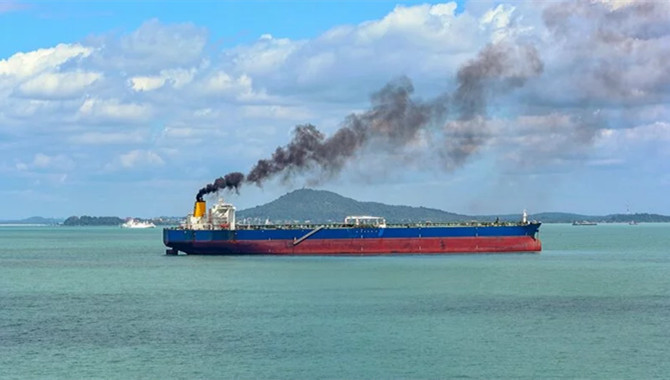

Source: Standard Club
Regulations coming into force in January 2023
Amendments to the IMO Convention for the Control of Harmful Anti-fouling Systems on Ships (AFS Convention) – MEPC.331(76) – Ban on use of AFS containing cybutryne
These amendments mean that AFS containing cybutryne shall not be applied or reapplied to any ship on or after 1 January 2023.
Ships bearing an AFS that contains cybutryne in the external coating layer of their hulls on 1 January 2023 shall either remove the anti-fouling system; or apply a coating that forms a barrier to this substance leaching from the underlying non-compliant AFS; no later than either the next scheduled renewal of the anti-fouling system after 1 January 2023, but no later than 60 months following the last application to the ship of an anti-fouling system containing cybutryne.
The above requirement does not apply to following vessels:
• fixed and floating platforms, FSUs, and FPSOs that have been constructed prior to 1 January 2023 and that have not been in drydock on or after 1 January 2023;
• ships not engaged in international voyages; and
• ships of less than 400 gross tonnage engaged in international voyages, if accepted by the Coastal State(s).
• fixed and floating platforms, FSUs, and FPSOs that have been constructed prior to 1 January 2023 and that have not been in drydock on or after 1 January 2023;
• ships not engaged in international voyages; and
• ships of less than 400 gross tonnage engaged in international voyages, if accepted by the Coastal State(s).
Further, the amended Annex 4 of the AFS Convention provides a revised model form of the International Antifouling System (IAFS) Certificate. Based on verification of compliance to amended requirements, an updated IAFS Certificate will be issued reflecting the compliance options for controlled anti-fouling systems on the ship.
Following the adoption of the amendments to the AFS Convention to include controls on cybutryne, MEPC-78 adopted three revised guidelines concerning the sampling, inspection, and survey of anti-fouling systems:
• MEPC.356(78) – 2022 Guidelines for Brief Sampling of Anti-Fouling Systems on Ships
• MEPC.357(78) – 2022 Guidelines for Inspection of Anti-Fouling Systems on Ships
• MEPC.358(78) – 2022 Guidelines for Survey and Certification of Anti-Fouling Systems on Ships
• MEPC.356(78) – 2022 Guidelines for Brief Sampling of Anti-Fouling Systems on Ships
• MEPC.357(78) – 2022 Guidelines for Inspection of Anti-Fouling Systems on Ships
• MEPC.358(78) – 2022 Guidelines for Survey and Certification of Anti-Fouling Systems on Ships
Members are advised to take note of above requirements and ensure that necessary planning is done while procuring anti-fouling paints so that it does not contain cybutryne. In the case of ships where anti-fouling system already contains cybutryne as on 1 January 2023, planning will be required for either the removal of such anti-fouling paint or for application of a sealing coating in consultation with the paint manufacturer in order to comply with the amended requirements.
Amendments to the 2011 Enhanced Survey Programme (ESP) code – MSC.483(103)
International code on the enhanced programme of inspections during surveys of bulk carriers and oil tankers, 2011 (2011 ESP Code) establishes a survey standard for the regular and safe survey of the cargo and ballast areas of oil tankers and bulk carriers.
These amendments require that from 1 January 2023 onwards, thickness measurements will only need to be taken of ‘suspect areas’ at the first renewal survey of double-hull oil tankers. This will align the thickness measurement requirements for oil tankers with those for bulk carriers.
Amendments to the STCW Convention 1978 – MSC.486(103)
Amendment to Regulation I/1.1 of the 1978 STCW Convention includes a new definition for ‘high-voltage’, which means an alternating current (AC) or direct current (DC) voltage in excess of 1,000 volts.
Members are advised to take note of this amendment. In instances, where there is a minimum standard of competence using the terminology “high-voltage”, the new definition will apply.
Amendment to Regulation I/1.1 of the 1978 STCW Convention includes a new definition for ‘high-voltage’, which means an alternating current (AC) or direct current (DC) voltage in excess of 1,000 volts.
Members are advised to take note of this amendment. In instances, where there is a minimum standard of competence using the terminology “high-voltage”, the new definition will apply.
Amendments to Part A of the STCW Code – MSC.487(103)
This amendment includes electro-technical officers in the definition of ‘operational level’ and clarifies their responsibilities.
Members are recommended to take note of the new requirements for certification of electro-technical officers and ensure compliance.
Amendments (06-21) to the International Maritime Solid Bulk Cargoes (IMSBC) code
(Voluntary implementation from 1 January 2023 and mandatory compliance from 1 December 2023)
Updates to the International Maritime Solid Bulk Cargoes (IMSBC) Code include a change of the definition of group A cargoes, re-classification of ammonium nitrate-based fertilizer (non-hazardous), and new cargo schedules for clam shell and leach residue containing lead and granular triple superphosphate.
The amendments will enter into force on 1 December 2023, with voluntary early implementation from 1 January 2023.
Members who are involved in the transport of solid bulk cargoes are recommended to pay due attention to their Flag State requirements for ships’ compliance.
Amendments (41-22) to the International Maritime Dangerous Goods (IMDG) code
(Voluntary implementation from 1 January 2023 and mandatory compliance from 1 January 2024)
The IMDG code is regularly reviewed and updated every two years to take into account new requirements for existing dangerous goods or new substances.
This amendment is in line with the updates to the United Nations Recommendations on the Transport of Dangerous Goods, which set the recommendations for all transport modes.
These amendments will enter into force on 1 January 2024 but may be applied voluntarily by some contracting governments from 1 January 2023.
Members who are involved in the transport of dangerous goods in packaged form are recommended to pay due attention to their Flag State requirements for ships’ compliance.
Regulation coming into force in November 2023
Amendments to Appendix I of MARPOL Annex II – MEPC.344(78) – Revised GESAMP Hazard Evaluation Procedure
These amendments include guidelines for the categorization of noxious liquid substances carried on chemical tankers, in order to reflect updates to the GESAMP Hazard Profile table. As a result, the tables under the title “Abbreviated legend to the revised GESAMP Hazard Evaluation Procedure” have been replaced.
Members are recommended to take note of these amendments and be guided accordingly.
Source: Standard Club
Source: Standard Club
The opinions expressed herein are the author's and not necessarily those of The Xinde Marine News.
Please Contact Us at:



